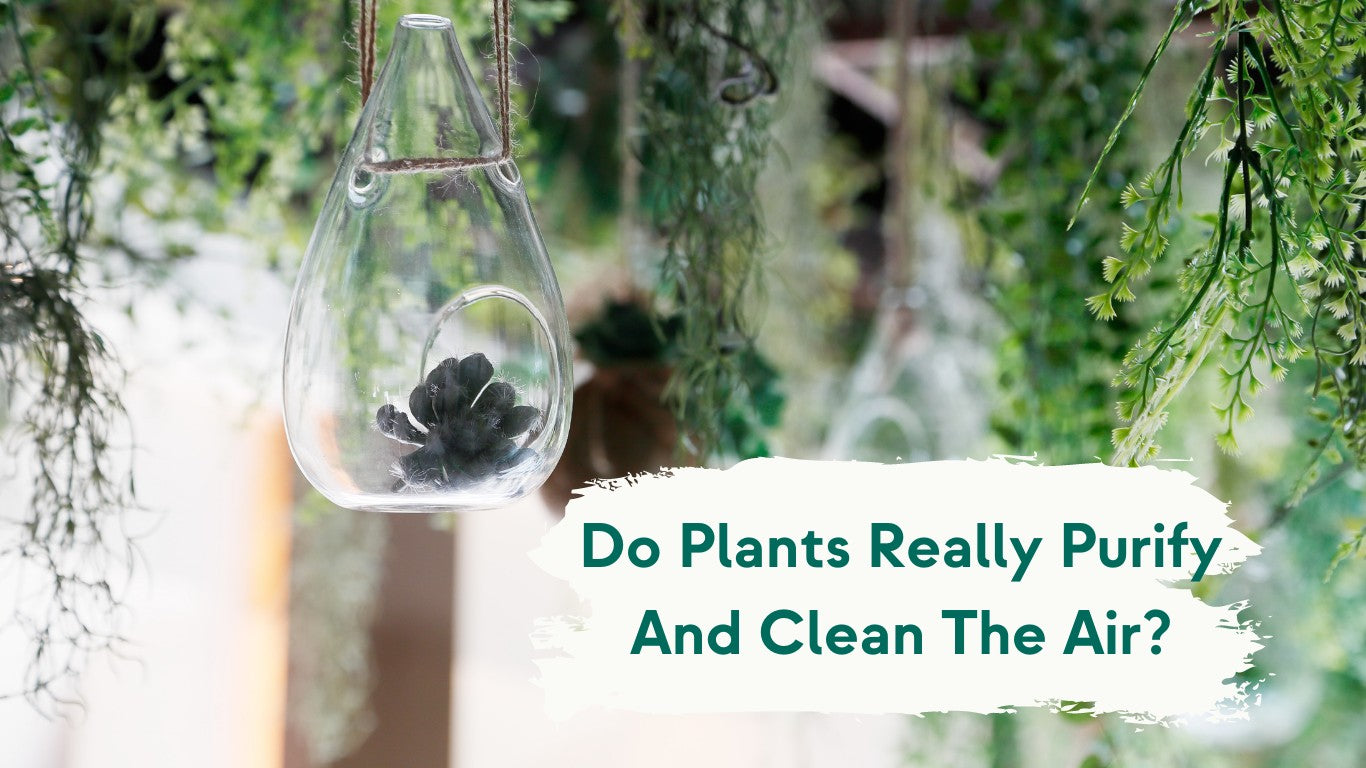How do indoor plants clean the air?
Plants can benefit your health, we all know this to some extent, but just how much do they affect our life? It mostly comes down to their ability to clean the air. Bringing plants indoors can actually improve the air quality in close spaces and the your health as a consequence. By the end of this article you will have no more excuses to not fill your home with green and life!
Plants filter the air primarily through a process called photosynthesis. As humans, we breathe in oxygen and breathe out carbon dioxide, plants do exactly the opposite. They absorb light, carbon dioxide, and water to “create” sugar, which is their source of energy. This chemical process creates oxygen as a “waste” byproduct.
Regardless of how advanced or powerful an air filtration system in a home or office might be, none have the ability to create oxygen. Oxygen is a vital element for our life, and is essential in clean and healthy air. Thus a combination of indoor plants and air-purification technology may be the answer to enhancing our exposure to healthy air.

At Botany Labs, we focused our study and research over the last three years primarily on this: enhancing air purification by using a combination of plants and technology. Indoor plants are often comprised of species native to the rainforest floor – those areas that experience fewer breezes and less light.
Plants that can naturally go through photosynthesis even in very low-light conditions like Snake Plants are amongst the best when it comes to air purification capabilities. In addition, it’s important to note that plants also produce so-called phytochemicals. These naturally-occurring chemicals are what plants use to protect themselves from insects, diseases, and microbes that could threaten them. That’s an additional benefit that comes with being surrounded by alive, healthy plants.
What about phytoremediation?
Phytoremediation refers to a natural process occurring in any plant that has the ability to mitigate pollutants in the air, soil and water. Through this process, plants can collect, absorb, and eliminate various chemicals and pollutants that are commonly found in the air. This alone might be a reason enough to surround yourself with a few healthy plants at home.
In a recent article, it was underlined how: “scientists studying the air-purification capacities of indoor plants have found that plants can absorb many other gases in addition to carbon dioxide, including an extensive list of volatile organic compounds (VOCs). Benzene (found in some plastics, fabrics, pesticides and cigarette smoke) and formaldehyde (found in some cosmetics, dish detergent, fabric softener and carpet cleaner) are examples of common indoor VOCs that plants help eliminate.”
Transpiration and Stomata
Indoor plants can also accelerate the process of transpiration, in which phytochemicals and water vapor are emitted from the plant into the air to create air movement. During transpiration, plants circulate air and can pull and absorb airborne toxins into their leaves and roots. When pollutants from the air are absorbed through microscopic openings in leaves, the process is called stomata.
Several studies from NASA indicate that plant-filled rooms contain up to 60% fewer airborne molds and bacteria than rooms without any plants.
What are the Best Indoor Plants that Clean the Air?
When it comes to choosing plants to use as air purifiers in your home, a good rule of thumb is the bigger and leafier the plant the better it purifies, with and hairy, rubbery and waxy leaves being even more effective. How many plants you need depends primarily on your available space, as well as the airflow and ventilation of the room. A close office room or a kitchen could have more built-up air pollutants than an airy living room, but there’s no reason more plants can’t be merrier in every room of the house. At the end of the day what room would look worse with more plants? So what are the 9 best air purifying plants?
- Peace Lilies
- Rubber plants
- Chrysanthemums
- Spider plants
- Chinese evergreen
- English ivy
- Golden pothos
- Dracaenas
- Areca palms
Also, keep in mind that variety is your friend. As different species remove different pollutants from the air, there are some that are definitely must-haves when it comes to indoor air purification.
And remember that happy plants filter air more efficiently, so consider where they’re placed in your room to optimize the sun and temperature in your home (some plants might like to be next to an eastern window but not too close to a heat vent, for example). Read up on your plants or ask someone at a gardening store to find out about the plants you chose!
A conclusive note
While indoor air pollution can be a dangerous threat, Nature provided us with one of the most effective ways to combat it: plants! Bringing more plants indoors and making them strive is essential in guaranteeing healthy levels of air pollution and fresh oxygen.
Not to mention, plants are proven to have a number of other beneficial effects on both our mental and physical health despite air purification.


Share:
Air Quality And Sleep: How Does Unclean Air Impact Your Sleep?
Biophilic Design: Incorporating Nature Into Your Space